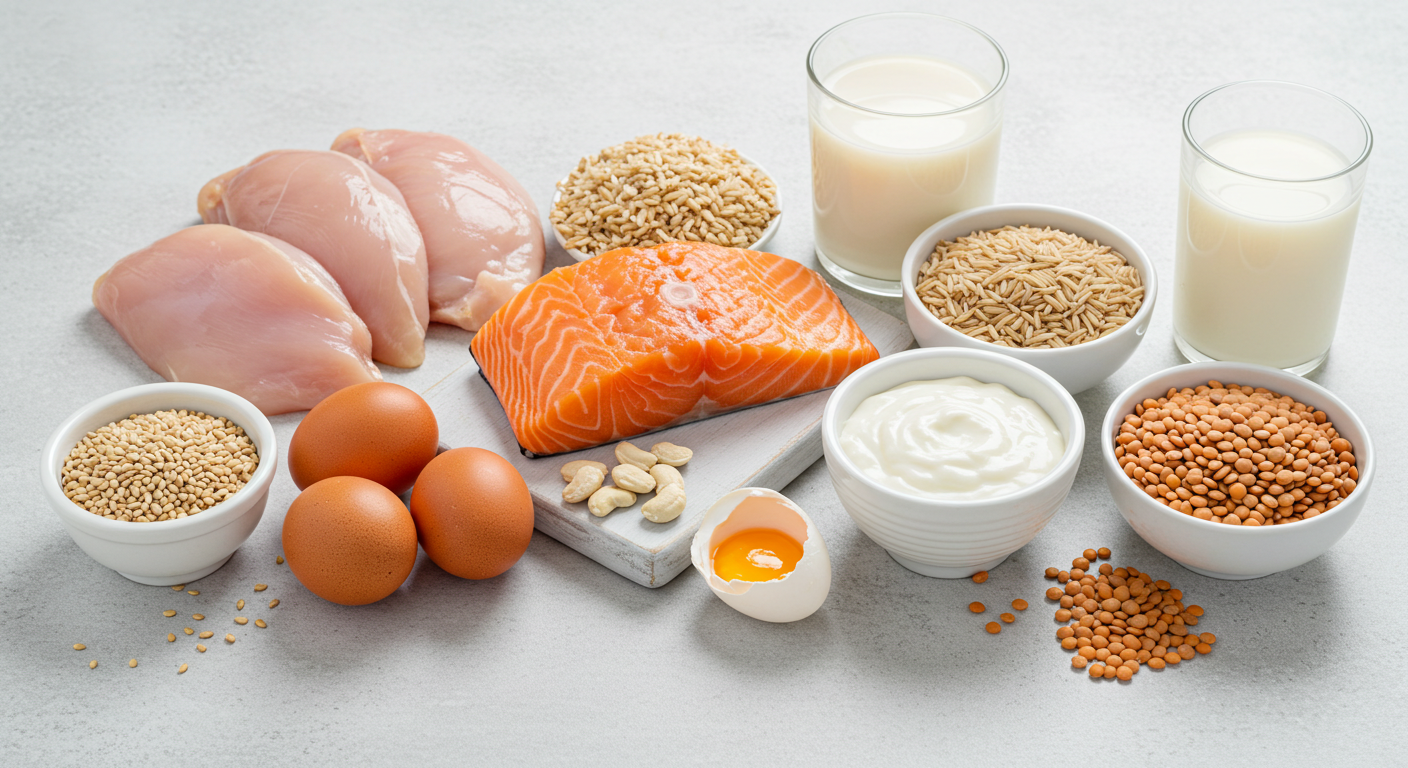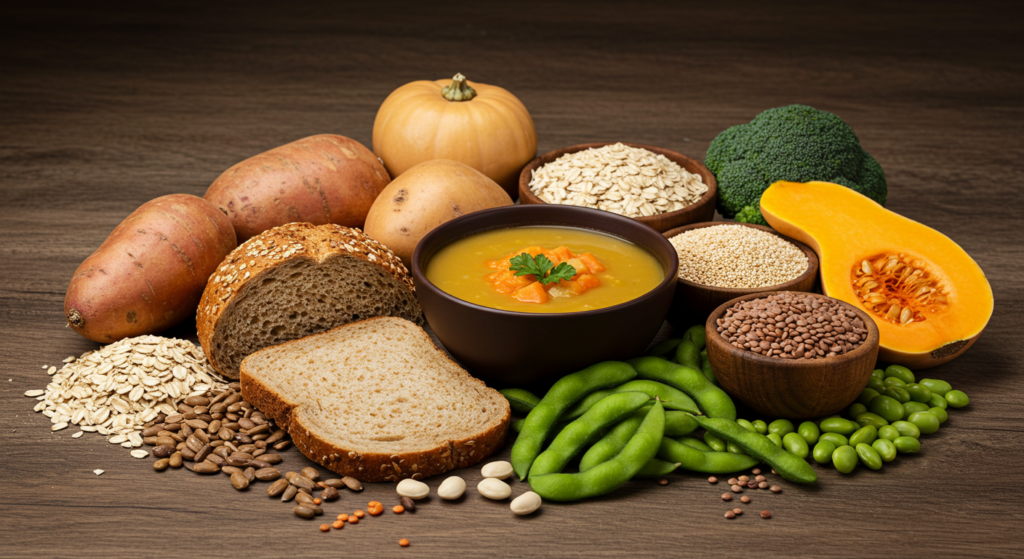
Metabolism is the engine of your body, converting food into energy that fuels everything from breathing to running a marathon.

A faster metabolism means more calories burned, aiding weight management and boosting vitality. While genetics and age play roles, lifestyle choices significantly influence metabolic rate. This article explores 10 actionable strategies to rev up your metabolism, supported by science and practical tips
1. Build Muscle Through Strength Training
Muscle tissue burns more calories at rest than fat—about 6 calories per pound daily versus 2 for fat. Incorporate resistance training 3-4 times weekly using weights, bands, or bodyweight exercises. Focus on compound movements like squats and deadlifts to engage multiple muscle groups. Over time, increased muscle mass elevates your basal metabolic rate (BMR), helping you burn more calories even while resting.
2. Embrace High-Intensity Interval Training (HIIT)
HIIT alternates short bursts of intense activity with recovery periods. This triggers excess post-exercise oxygen consumption (EPOC), where the body burns extra calories for hours post-workout. A 20-minute HIIT session can be more effective than steady-state cardio. Try sprint intervals or cycling sprints, gradually increasing intensity.
3. Prioritize Protein in Your Diet
Protein has a high thermic effect (TEF), meaning digestion burns 20-30% of its calories, compared to 5-10% for carbs and fats. It also preserves muscle during weight loss. Include lean meats, fish, eggs, or plant-based options like lentils in meals. Aim for 25-30 grams per meal to optimize muscle synthesis.
4. Stay Hydrated with Cold Water
Hydration is crucial for metabolic processes. Studies suggest drinking 17 oz of water increases metabolic rate by 30% for 30-40 minutes. Cold water may enhance this effect as the body expends energy to heat it. Carry a reusable bottle and sip throughout the day.
5. Optimize Sleep Quality
Poor sleep disrupts hormones like ghrelin (hunger) and leptin (satiety), increasing cravings and insulin resistance. Aim for 7-9 hours nightly. Create a bedtime routine: dim lights, avoid screens, and maintain a cool room. Quality sleep supports muscle recovery and metabolic health.
6. Manage Chronic Stress
Chronic stress elevates cortisol, promoting fat storage and cravings. Practice stress-reduction techniques like mindfulness, yoga, or deep breathing. Even 10 minutes daily can lower cortisol levels, improving metabolic efficiency.
7. Avoid Extreme Calorie Restriction
Crash diets (under 1,200 calories/day) signal starvation mode, slowing metabolism by up to 23%. Instead, aim for a modest deficit (500 calories/day) and focus on nutrient-dense foods. Pair with strength training to preserve muscle.
8. Incorporate Metabolism-Boosting Foods
- Spicy Foods: Capsaicin in chili peppers temporarily increases calorie burn. Add spices to meals.
- Green Tea: Catechins and caffeine synergize to enhance fat oxidation. Drink 2-3 cups daily.
- Coffee: Moderate caffeine intake can boost metabolism by 3-11%. Avoid sugary additives.

- Metabolism Booster – Packed with thermogenic ingredients that can serve as a fat burner for women & men. Help promote he…
- Superior Formulation – Expertly formulated with Malabar Tamarind Extract, Green Coffee Bean Extract & Green Tea Extract …
- Appetite Suppressant – Weight loss supplements are formulated to promote a feeling of fullness. Used in combination with…
9. Increase Non-Exercise Activity Thermogenesis (NEAT)
NEAT includes daily movements like walking, gardening, or fidgeting. Small changes add up: take stairs, walk during calls, or use a standing desk. NEAT can account for 15-30% of daily calorie expenditure.
10. Address Nutrient Deficiencies
- Iron: Essential for oxygen transport. Low iron slows metabolism. Sources: spinach, red meat, lentils.
- Vitamin D: Linked to fat metabolism. Get sunlight or consume fortified foods. Consider supplements if deficient.
Bonus Tips
- Fiber Intake: Supports gut health and prolongs satiety. Aim for 25-30g daily from veggies, fruits, and whole grains.
- Cold Exposure: Cold showers or outdoor walks may activate brown fat, burning calories to generate heat.
Conclusion
Boosting metabolism isn’t about quick fixes but adopting sustainable habits. Combine strength training, mindful eating, and stress management for optimal results. Start with 2-3 strategies, gradually incorporating more. Remember, small, consistent changes yield lasting benefits. Consult a healthcare provider before major lifestyle shifts, especially if managing health conditions. Empower your metabolism, and unlock newfound energy and vitality!
References by Topic
- Muscle Mass and Metabolism
- Wolfe, R. R. (2006). The underappreciated role of muscle in health and disease. American Journal of Clinical Nutrition.
- Westcott, W. L. (2012). Resistance training is medicine. Current Sports Medicine Reports.
- HIIT and EPOC
- LaForgia, J., et al. (2006). Effects of exercise intensity and duration on the excess post-exercise oxygen consumption. Journal of Sports Sciences.
- Boutcher, S. H. (2011). High-intensity intermittent exercise and fat loss. Journal of Obesity.
- Protein’s Thermic Effect
- Halton, T. L., & Hu, F. B. (2004). The effects of high protein diets on thermogenesis, satiety, and weight loss. Journal of the American College of Nutrition.
- Pesta, D. H., & Samuel, V. T. (2014). A high-protein diet for reducing body fat. Nutrition & Metabolism.
- Hydration and Metabolism
- Boschmann, M., et al. (2003). Water-induced thermogenesis. The Journal of Clinical Endocrinology & Metabolism.
- Sleep and Metabolic Health
- Spiegel, K., et al. (2004). Sleep loss: a novel risk factor for insulin resistance and Type 2 diabetes. Journal of Applied Physiology.
- National Sleep Foundation. (n.d.). How Sleep Affects Your Metabolism.
- Stress and Cortisol
- Epel, E. S., et al. (2000). Stress and body shape: Chronic stress, cortisol, and visceral fat. Annals of the New York Academy of Sciences.
- Caloric Restriction and Metabolic Adaptation
- Trexler, E. T., et al. (2014). Metabolic adaptation to weight loss. International Journal of Sport Nutrition and Exercise Metabolism.
- Metabolism-Boosting Foods
- Ludy, M. J., et al. (2012). The effects of capsaicin and capsiate on energy balance. Appetite.
- Dulloo, A. G., et al. (1999). Efficacy of green tea for body fat reduction. The American Journal of Clinical Nutrition.
- NEAT (Non-Exercise Activity Thermogenesis)
- Levine, J. A. (2004). Nonexercise activity thermogenesis (NEAT). Nutrition Reviews.
- Nutrient Deficiencies
- McClung, J. P., et al. (2013). Iron deficiency and obesity: Mechanisms and metabolic implications. Obesity Reviews.
- Wamberg, L., et al. (2013). Effects of vitamin D on body fat and energy metabolism. Molecular Nutrition & Food Research.
- Fiber and Gut Health
- Slavin, J. (2013). Fiber and prebiotics: Mechanisms and health benefits. Nutrients.
- Cold Exposure and Brown Fat
- van Marken Lichtenbelt, W. D., et al. (2009). Cold-activated brown adipose tissue in healthy men. New England Journal of Medicine.




